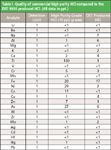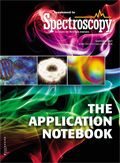Improving Trace Metals Data Quality Through In-Lab Acid Purification
Application Notebook
In-lab acid purification offers significant benefits compared to commercial bottled high purity acid. In-lab purified acid is extremely pure, produced fresh on demand, and the cost savings compared to bottled high purity acid are significant.
In-lab acid purification offers significant benefits compared to commercial bottled high purity acid. In-lab purified acid is extremely pure, produced fresh on demand, and the cost savings compared to bottled high purity acid are significant. The low cost of in-lab purified acid allows it to be used for sample digestion, which reduces the sample prep blank, improving data quality.
With more labs using ICP-MS to perform trace metals analysis, the use of high purity acid (to meet ICP-MS reagent quality requirements) has increased dramatically. At the same time, lab consumables costs are coming under ever stricter control. As a result, many labs are producing their own high purity grade (10 ppt) acids in-house by purifying lower cost trace metal grade (1 ppb) acid, using the Savillex DST-1000 Acid Purification System.

Figure 1: Savillex DST-1000 Acid Purification System.
Extremely easy to use, the DST-1000 is a compact, all PFA system that fits in any fume hood and requires no cooling water. The DST-1000 operates unattended, purifying acid by the process of sub-boiling distillation. It produces approximately 500 mL of high purity HNO3, HCl or HF every 12 h — essentially a continuous supply of high purity acid suitable for the most demanding ICP-MS applications — even semiconductor and geochemical.
Table I shows that the HCl produced by the DST-1000 actually has a lower metal content than commercial bottled high purity HCl. In addition, Hg is not detectable, which makes it ideal for CVAA use. Similar improvements in metal content are seen with HNO3 and HF. And unlike commercial bottled acid, which degrades every time the bottle is opened, DST-1000 acid is freshly produced and so always uncontaminated. The DST-1000 produces a continuous supply of high purity acid at the cost of trace metal grade acid, which brings other benefits: high purity acid can be used for sample digestions, which lowers the sample prep blank, improves data quality and reduces re-runs.

Table I: Quality of commercial high purity HCl compared to the DST-1000 produced HCl. (All data in ppt.)
High purity acid can also be used for all ICP-OES determinations, and the risk of contamination from a large bottle of trace metal grade acid, that has been opened many times, is eliminated.
The cost savings gained from in-lab acid purification with the DST-1000 are significant: even taking into account the purchase price of the DST-1000, a lab currently buying 2 L high purity HNO3 per month will save approx. $16K in the first 3 years and a lab buying 6 L per month will save $60K. With HF, the savings are more than double due to the high price of high purity HF. More information is available online at www.savillex.com.
Savillex Corporation
10321 West 70th St., Eden Prairie, MN 55344
tel. (952) 935-4100
Website: www.savillex.com

Atomic Perspectives: Highlights from Recent Columns
March 3rd 2025“Atomic Perspectives,” provides tutorials and updates on new analytical atomic spectroscopy techniques in a broad range of applications, including environmental analysis, food and beverage analysis, and space exploration, to name a few. Here, we present a compilation of some of the most popular columns.